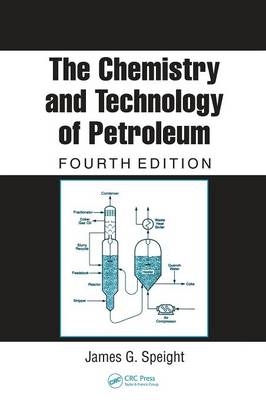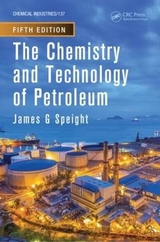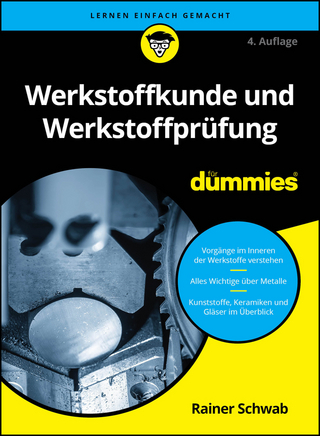
The Chemistry and Technology of Petroleum, Fourth Edition
Crc Press Inc (Verlag)
978-0-8493-9067-8 (ISBN)
- Titel erscheint in neuer Auflage
- Artikel merken
Refineries must not only adapt to evolving environmental regulations for cleaner product specifications and processing, but also find ways to meet the increasing demand for petroleum products,particularly for liquid fuels and petrochemical feedstocks. The Chemistry and Technology of Petroleum, Fourth Edition offers a 21st century perspective on the development of petroleum refining technologies. Like its bestselling predecessors, this volume traces the science of petroleum from its subterranean formation to the physicochemical properties and the production of numerous products and petrochemical intermediates. Presenting nearly 50 percent new material, this edition emphasizes novel refining approaches that optimize efficiency and throughput. It includes new chapters on heavy oil and tar sand bitumen recovery, deasphalting and dewaxing processes, and environmental aspects of refining, including refinery wastes, regulations, and analysis. The text also features revised and expanded coverage of instability and incompatibility, refinery distillation, thermal cracking, hydrotreating and desulfurization, hydrocracking, and hydrogen production.
A unique, well-documented, and forward-thinking work, this book continues to present the most complete coverage of petroleum science, technology, and refining available. The Chemistry and Technology of Petroleum, Fourth Edition provides an ideal platform for scientists, engineers, and other professionals to achieve cleaner and more efficient petroleum processing methods.
PART I: HISTORY, OCCURRENCE, AND RECOVERY
History and Terminology
Historical Perspectives
Modern Perspectives
Definitions and Terminology
Native Materials
Manufactured Materials
Derived Materials
Oil Prices
Classification
Classification Systems
Miscellaneous Systems
Reservoir Classification
Origin and Occurrence
Origin
Occurrence
Kerogen
Properties
Composition
Classification
Isolation
Methods for Probing Kerogen Structure
Structural Models
Kerogen Maturation
Exploration, Recovery, and Transportation
Exploration
Drilling Operations
Well Completion
Recovery
Products and Product Quality
Transportation
New! Recovery of Heavy Oil and Tar Sand Bitumen
Oil Mining
Nonmining Methods
PART II: COMPOSITION AND PROPERTIES
Chemical Composition
Ultimate (Elemental) Composition
Chemical Components
Chemical Composition by Distillation
Fractional Composition
Distillation
Solvent Treatment
Adsorption
Chemical Methods
Use of the Data
Petroleum Analysis
Petroleum Assay
Physical Properties
Thermal Properties
Electrical Properties
Optical Properties
Spectroscopic Methods
Chromatographic Methods
Molecular Weight
Use of the Data
Structural Group Analysis
Methods for Structural Group Analysis
Miscellaneous Methods
Asphaltene Constituents
Separation
Composition
Molecular Weight
Reactions
Solubility Parameter
Structural Aspects
Structure of Petroleum
Molecular Species in Petroleum
Chemical and Physical Structure of Petroleum
Stability or Instability of the Crude Oil System
Effects on Recovery and Refining
Completely Revised! Instability and Incompatibility
Instability and Incompatibility in Petroleum
Factors Influencing Instability and Incompatibility
Methods for Determining Instability and Incompatibility
Effect of Asphaltene Constituents
PART III: REFINING
New! Introduction to Refining Processes
Dewatering and Desalting
Early Processes
Distillation
Thermal Methods
Catalytic Methods
Hydroprocesses
Reforming
Isomerization
Alkylation Processes
Polymerization Processes
Solvent Process
Refining Heavy Feedstocks
Petroleum Products
Petrochemicals
Completely Revised! Refining Chemistry
Cracking
Hydrogenation
Isomerization
Alkylation
Polymerization
Process Chemistry
Completely Revised! Distillation
Pretreatment
Atmospheric and Vacuum Distillation
Equipment
Other Processes
Completely Revised! Thermal Cracking
Early Processes
Commercial Processes
Catalytic Cracking
Early Processes
Commercial Processes
Catalysts
Process Parameters
New! Deasphalting and Dewaxing Processes
Commercial Processes
Dewaxing Processes
Completely Revised! Hydrotreating and Desulfurization
Process Parameters and Reactors
Commercial Processes
Catalysts
Biodesulfurization
Gasoline and Diesel Fuel Polishing
Completely Revised! Hydrocracking
Commercial Processes
Catalysts
Completely Revised! Hydrogen Production
Processes Requiring Hydrogen
Feedstocks
Process Chemistry
Commercial Processes
Catalysts
Hydrogen Purification
Hydrogen Management
Product Improvement
Reforming
Isomerization
Alkylation
Polymerization
Catalysts
Product Treating
Commercial Processes
Gas Processing
Gas Cleaning
Water Removal
Liquids Removal
Nitrogen Removal
Acid Gas Removal
Enrichment
Fractionation
Claus Process
Completely Revised! Products
Gaseous Fuels
Gasoline
Solvents (Naphtha)
Kerosene
Fuel Oil
Lubricating Oil
Other Oil Products
Grease
Wax
Asphalt
Coke
Sulfonic Acids
Acid Sludge
Product Blending
Petrochemicals
Chemicals from Paraffins
Chemicals from Olefins
Chemicals from Aromatics
Chemicals from Acetylene
Chemicals from Natural Gas
Inorganic Petrochemicals
Synthesis Gas
PART IV: ENVIRONMENTAL ISSUES
New! Environmental Aspects of Refining
Definitions
Environmental Regulations
Process Analysis
Epilog
New! Refinery Wastes
Process Wastes
Types of Waste
Waste Toxicity
Refinery Outlook
Management of Refinery Waste
New! Environmental Analysis
Petroleum and Petroleum Products
Leachability and Toxicity
Total Petroleum Hydrocarbons
Petroleum Group Analysis
Petroleum Fractions
Assessment of the Methods
Conversion Factors
Glossary
Index
*Each Chapter contains Introduction and Reference sections
| Erscheint lt. Verlag | 31.10.2006 |
|---|---|
| Reihe/Serie | Chemical Industries |
| Zusatzinfo | 113 Tables, black and white; 225 Illustrations, black and white |
| Verlagsort | Bosa Roca |
| Sprache | englisch |
| Maße | 178 x 254 mm |
| Gewicht | 1928 g |
| Themenwelt | Naturwissenschaften ► Chemie |
| ISBN-10 | 0-8493-9067-2 / 0849390672 |
| ISBN-13 | 978-0-8493-9067-8 / 9780849390678 |
| Zustand | Neuware |
| Informationen gemäß Produktsicherheitsverordnung (GPSR) | |
| Haben Sie eine Frage zum Produkt? |
aus dem Bereich



